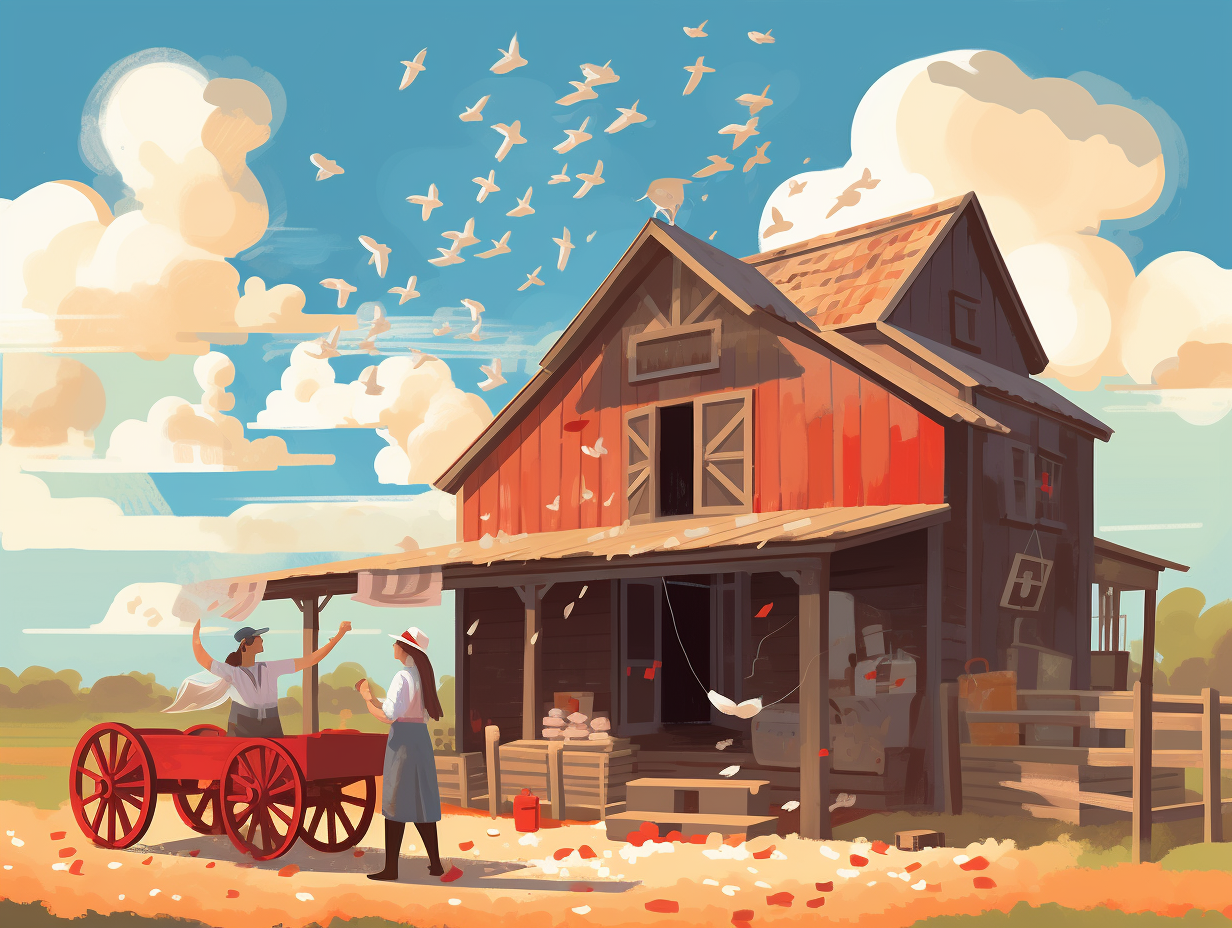Unraveling the Threads: Top 14 Fun and Fascinating Facts About the Cotton Gin

1. Cotton Gin's Slavery Surge
Before Eli Whitney had us all in stitches with his big break in the cotton biz: his 1794 invention of the cotton gin revolutionized cotton production in America and, in a not-so-funny twist, led to the widespread expansion of slavery in the South due to the increased profitability of cotton farming.
Source => history.com
2. Playground Bully Gin
Why did the cotton gin get in trouble on the playground? It kept picking on the other kids: In reality, Eli Whitney's invention of the cotton gin escalated the demand for enslaved labor in the American South, increasing the population of enslaved individuals from about 700,000 in 1790 to a staggering 4 million by 1860.
Source => archives.gov

Did you know Eli Whitney's cotton gin invention actually boosted the demand for enslaved labor and expanded the slave trade? Uncover the unexpected truth behind this historical twist!
=> Fun Facts about Eli-Whitney
3. Snappy Moniker Evolution
Don't get "gin-gine" twisted: the cotton gin, that revolutionary contraption which fueled the 19th-century textile boom, wasn't actually christened as an "engine" by its creators. Instead, Eli Whitney and his sidekick Phineas Miller called their brainchild a "machine for cleaning cotton seeds," and it was only later on that folks cottoned on to the snappier moniker we know today.
Source => history.com
4. Unintended Slavery Boost
Hold your horses, Eli Whitney – you may have been cotton-pickin' sly with your fibrous fantasies, but your invention had an unintentional hitch: The cotton gin, while streamlining the process of separating seeds from cotton fibers, actually boosted the demand for slaves in the United States. As production became more lucrative, even more unfortunate souls were needed to work those fields, round the clock, till the cows came home – and well beyond. Can you gin and bear it?
Source => etymonline.com

5. Lint-Roller Time-Travel
Hold on to your lint rollers, folks, because we're about to take a trip down cotton lane: The cotton gin, invented by Eli Whitney in 1794, unintentionally boosted the demand for enslaved labor in the South, as cotton's newfound profitability plunged millions into forced labor and reinforced the horrendous institution of slavery in the United States.
Source => archives.gov
6. Gin & Tonic Cotton Edition
Cotton gin: a machine that doesn't work after a few too many G&Ts, wink wink! But on a serious note: invented by Eli Whitney in 1793, the gin revolutionized cotton production by speeding up seed removal, boosting productivity in the industry, but also darkening America's past, as it inadvertently fueled the demand for more enslaved labor to work in those fields.
Source => historycrunch.com
7. Seed Separator Supreme
If Eli Whitney's cotton gin were a superhero, it would be called "The Seed Separator Supreme" with a flashing cotton ball cape: This nifty invention revolutionized the cotton industry by rapidly separating cotton seeds from fibrous fluff, increasing efficiency and turning cotton plants into fiber-fighting phenoms!
Source => naldc.nal.usda.gov
8. Cotton Gin Piracy
Who would've thought Eli Whitney's cotton gin would become the darling of 18th-century piracy? Move over, Blackbeard: Plantation owners swiped the design and tinkered their way toward their own souped-up versions, leaving Whitney with cotton-pressed blueprints and meager profits from his revolutionary invention.
Source => history.com
9. From Gun Cartridges to Cotton
Before Eli Whitney started "ginning" and bearing it, he was "locked and loaded" with an entirely different target in mind: Eli Whitney originally aimed to improve the process of making gun cartridges for the US Army but adapted his invention to the cotton industry after witnessing the tedious task of removing cotton seeds on a Georgia plantation.
Source => dp.la

10. Contrary Cotton Gin
In a twist more tangled than a pile of freshly-picked cotton, Eli Whitney may have had some Good Vibrations when he made the cotton gin, but he couldn't Pet Sounds out the call for more slaves: Contrary to popular belief, Eli Whitney's creation of the cotton gin wasn't meant to put an end to slavery, but rather to alleviate the labor-intensive process of cotton production. Unfortunately, the gin's profitable boom led to an expansion of slavery in the South, as cotton plantations required more slaves to sustain larger crops.
Source => history.com
11. Hocus Pocus Cotton Machine
Step right up and behold the magical machine that transformed the cotton industry faster than you can say "hocus pocus": The cotton gin could separate cotton fibers from their seeds at lightning speed, doing the work of 50 people in a single day! But this enchanted contraption came with a dark side, as its efficiency perpetuated slavery in the South, boosting the demand for enslaved labor to cultivate and process cotton.
Source => eh.net
12. High-Performance Gin Makeover
In a gin-ovation that would make even James Bond take his martini shaken not stirred, the cotton gin machine gave a whole new meaning to rolling with the punches: By introducing a stick accelerator in the side walls of the roll box, a 30-saw gin machine's efficiency skyrocketed as it decreased raw cotton density, and increased the yield of bare seeds in one sleek swoop.
Source => researchgate.net
13. Accidental Sorority Party Gin
If the cotton gin were a high school movie, it'd be the socially awkward genius that accidentally fueled a sorority's mega party: The invention of the cotton gin rocketed cotton production in the American South, inadvertently boosting the demand for enslaved laborers to pick and process cotton, thus perpetuating the gruesome practice of slavery long after it had ended elsewhere.
Source => study.com
14. Future Cotton Robots
Cotton gins are gearing up for a futuristic makeover: Thanks to Cotton Incorporated, advances in robotics and artificial intelligence are set to revamp the humble gin, introducing small autonomous harvesters, as well as reducing greenhouse gas emissions and using machine learning to monitor moisture content for higher quality fibers – all while keeping your favorite pair of jeans sustainable and trendy!
Source => cottontoday.cottoninc.com
Related Fun Facts




















